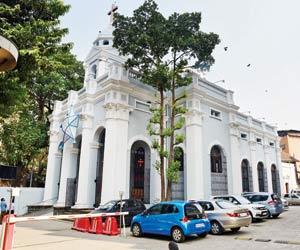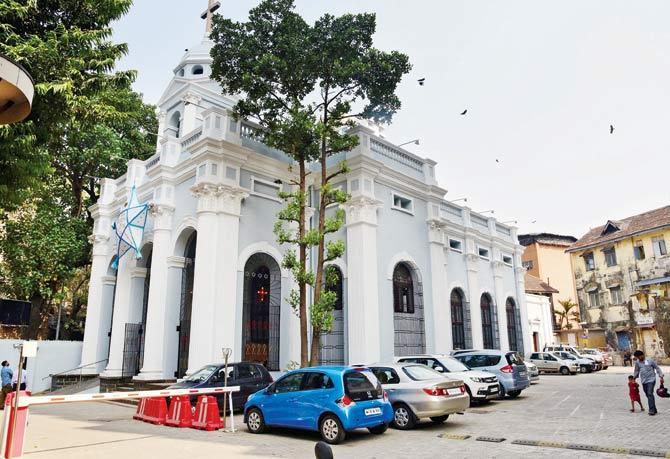The intent shown by parishioners of Umerkhadi's Holy Cross church in reviving their place of worship is a stellar example of how people power can play a role in safeguarding the city's heritage


The Holy Cross Church at Umerkhadi. File pic
ADVERTISEMENT
 According to George Buist's Guide to Bombay, Umerkhadi, a neighbourhood in Mazgaon, was termed as Omar Kader, 'Kader' being the word always applied to salt water creeks that die at ebb tide. Armed with this interesting nugget of information about its origins, we headed into this little pocket in Byculla, usually overshadowed by its far more illustrious neighbours Nagpada and Bhendi Bazaar.
According to George Buist's Guide to Bombay, Umerkhadi, a neighbourhood in Mazgaon, was termed as Omar Kader, 'Kader' being the word always applied to salt water creeks that die at ebb tide. Armed with this interesting nugget of information about its origins, we headed into this little pocket in Byculla, usually overshadowed by its far more illustrious neighbours Nagpada and Bhendi Bazaar.
As our kaali-peeli wormed its way through back alleys and gullies after we got off the Eastern Freeway, we soaked in the urban scrawl as we crossed points like St Joseph's Church and School [recalling an uncle's narration of his grand wedding reception on its grounds], the many streets named after Navroji Hill, and Noor Baug. It was a fascinating slow-mo ride, one that we weren't complaining about. The architecture of the chawls, rundown buildings, jaali-work on some of its balconies and wooden banisters made for interesting viewing even before we could reach our destination - the 120-year-old Holy Cross Church.
And then, out of nowhere, a towering church painted in soft shades of grey, and a striking spire fell right into our line of vision. Craning our necks to catch its tallest point, we were caught by surprise of this island of calm, bang in the middle of urban chaos, a bustling hospital complex. After nearly two decades, this church's parishioners were able to raise sufficient funds to give their church a much-needed facelift. As we are taken for a tour inside the church by some of its senior members, including the resident reverend, we slowly begin to get a sense of the community at work, and how a collective, combined effort by a small congregation ensured their place of worship received a makeover.
At the back of our head, we were thinking of the 'khadi' that the Scottish journalist and scientist, Buist had written about, and the obstacles faced by the community at the time to build such a magnificent citadel. Surely, it must have been no mean engineering feat keeping in mind the geographical restrictions that would have come into play. As if reading our mind, honorary advisor for the project, conservation architect Vikas Dilawari who was on site at the time, directed our attention to a massive porch that was built to ensure water didn't enter the church, and the structure could withstand for centuries to come. It took years to complete, a parishioner added, citing that it was a massive effort to ensure the church stayed above water due to the khadi.
The analogy struck us right there. Despite the hurdles, fall in the numbers (of parishioners), lack of deep-pocketed benefactors and other interested parties, this bunch of likeminded middle-class folk stood above everything to ensure that their church was restored. This example should serve as a telling one for communities across the city that are faced with similar scenarios – to stand together and save their heritage, despite the odds. In a metropolis where every square foot of land is under threat, such fairy tales ensure that happy endings can spring up even in concrete jungles.
mid-day's Features Editor Fiona Fernandez relishes the city's sights, sounds, smells and stones...wherever the ink and the inclination takes her. She tweets @bombayana Send your feedback to mailbag@mid-day.com
Catch up on all the latest Mumbai, National and International news here
Download the new mid-day Android and iOS apps to get updates on all the latest and trending stories on the go
 Subscribe today by clicking the link and stay updated with the latest news!" Click here!
Subscribe today by clicking the link and stay updated with the latest news!" Click here!






